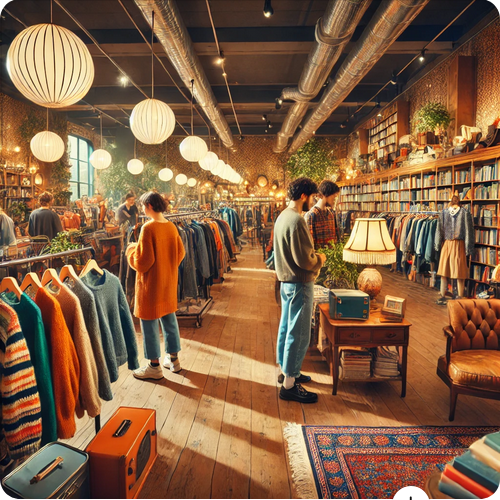Thrift stores are experiencing a resurgence in popularity, and for good reason. They’re no longer just places to find budget-friendly items; they’ve become hubs of sustainable shopping and creative self-expression. With a growing awareness of environmental issues and a desire for unique fashion, furniture, and décor, more people are discovering the value and excitement of secondhand shopping.
Sustainability at the Heart of Thrift Shopping
One of the main reasons thrift stores have gained traction is their role in promoting sustainability. The fashion and retail industries are among the largest contributors to waste and pollution, with fast fashion fueling a culture of disposable clothing. By choosing to shop secondhand, consumers help reduce demand for new production, minimize waste, and extend the lifecycle of perfectly good items.
Thrift stores give new life to clothing, furniture, and household goods that might otherwise end up in landfills. This circular economy not only benefits the environment but also fosters a sense of community as people donate and purchase items, creating a shared resource for sustainable living.
A Unique Treasure Hunt
Thrift shopping isn’t just practical—it’s fun. Each visit to a thrift store is like a treasure hunt, where you never know what gems you’ll uncover. From vintage designer pieces to quirky home décor, thrift stores offer a sense of discovery that traditional retail simply can’t match.
For many, the appeal lies in the uniqueness of the items. Thrift stores often carry one-of-a-kind pieces that reflect the individuality of their previous owners. Whether it’s a 1970s leather jacket or a hand-carved wooden table, these items come with a story, adding depth and character to your wardrobe or home.

Thrifting as a Lifestyle
For some, thrifting becomes more than a shopping habit—it’s a lifestyle. It’s about being intentional with purchases, valuing quality over quantity, and appreciating the charm of pre-loved items. Many thrift shoppers take pride in their finds, sharing stories of their best scores and even transforming pieces through upcycling projects.
Social media has played a significant role in popularizing thrift culture, with influencers showcasing their thrift hauls and creative ways to style secondhand finds. This visibility has helped reshape perceptions of thrift stores, turning them into trendy, desirable destinations.
Thrift Stores as Community Anchors
Beyond their environmental and aesthetic appeal, thrift stores often support important community causes. Many are run by nonprofit organizations, with proceeds funding programs like housing assistance, job training, and food banks. Shopping at these stores means you’re not only finding unique items but also contributing to meaningful initiatives.
Thrift stores embody the spirit of giving and receiving, creating a cycle that benefits individuals, communities, and the planet. As the world continues to shift toward more sustainable practices, thrift stores are poised to play an even larger role in shaping a greener future.